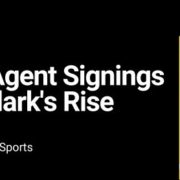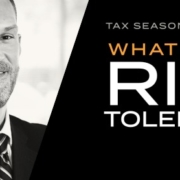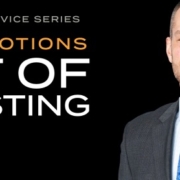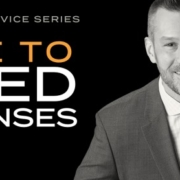Noel LaMontagne on Bloomberg Business of Sports
Noel LaMontagne on Bloomberg Business of Sports
Are You Getting What You Pay For?
How to Ask if You are Building Your Wealth or Someone Else’s
Some of the most simple and common adages in life directly apply to the most complex and lucrative aspects of business and building wealth. A penny saved is a penny earned, is as clear as wisdom can get, but what if you are referring to hundreds of thousands of pennies and not just one? The amount of money that the clients of financial advisors unknowingly spend on fees, commissions, and other undisclosed costs add up to significantly more than just a few pennies on the dollar.
The key to saving all these pennies and compounding them up to millions of dollars over time is asking the right questions. If you want to know how much the financial advice you get costs, you must know and verify the following:
- What are the fees I am paying directly to my advisor (Advisory or Wrap Fee)?
- What fees am I paying to the investment managers my advisor hires?
- Has my advisor made a commission on any of the products I currently have, and can they continue to make commissions going forward on any products?
- Does my advisor have any “soft-dollar” (advisor benefits in return for using products or services) arrangements with custodians or investment managers?
- Can I have a copy of the advisory firm’s fee schedule and is my fee in line with the firm’s fee schedule?
- What do the additional services my advisor provides cost me or are any of them included in my advisory fee?
- What is my portfolio performance “net of all fees and costs”?
- Does my advisor accept gifts or any incentives from asset managers, insurance companies, or any service provider to entice them to select offerings from those companies?
Additionally, on any advisor’s website, you should be able to get a copy of the Form CRS (Customer Relationship Summary) which outlines, among other important details and information, exactly how the advisor is compensated and whether they are fee-only, commission based, or a combination of both. This form will also disclose any conflicts of interest, legal or disciplinary history, and other costs related to services provided by that advisor.
A handful of simple direct questions and some additional research time can provide you with a wealth of knowledge, and most importantly they expose how efficiently you are building your wealth versus contributing to the wealth of someone else. Every dollar that you save and invest should pay you back first, foremost, and always as efficiently as possible. The fees, commissions, add-on costs, and conflicts that pile up in portfolios can be staggering. Conflicts can be especially troublesome when your advisor is incentivized to select certain investments for you instead of finding the best solution for your need at the best possible price. The collective impact of all these factors that erode portfolio performance is called “scrape” and it can drag any portfolio growth to near stagnation or worse.
The erosive effect that fees and costs have on portfolios emphasizes how vitally important the final question from above regarding net performance is to investors evaluating their advisors. The total amount that you pay for advice is independent of the returns received, and therefore “returns net of fees” truly shows you where you stand. As an example, three separate firms offer different fee structures and descriptions:
- Firm A charges 50 basis points (one-half of 1%) annually on assets under management, no other fees/commissions, and produces a 6.0% gross portfolio return for clients, while touting how they are simple, efficient, inexpensive, and do not waste client money on needless services to get their results.
- Firm B charges a 100 basis points (1%) on assets under management, no other fees/commissions, takes no soft dollars from managers, and produces a 9.0% gross portfolio return for clients, while advertising client experience, few conflicts of interest, an extensive service package beyond financial advice, and continuing business and financial education.
- Firm C charges 50 basis points, 8% commission on annuities, 10% commission on private investments, receives soft dollar benefits from their managers, and additional fees above their base fee on proprietary investments, and produces a 10.0% gross portfolio return for clients, while highlighting how great they are at driving high returns and making money for clients.
The most client performance-centered option from this group is Firm B, who has eliminated incentivized advice and scrape, and focused their attention and service on their clients, while driving the best “net of fees” return for those clients. Firm C has produced impressive results for a low base fee, but they are riddled with conflicts that may not put clients first, and their commissions and proprietary products incentivize them to put firm before client to make more money above their base fee. The actual net return from Firm C will be reduced dramatically with hidden costs and fees. Firm A charges the least overall and looks efficient, but their net results lag the others, while offering no additional services to clients that justify accepting a comparatively lower overall return. This simplified example illustrates that how much an advisor costs is not directly correlated with what advisor is best. A more real-world scenario would require more depth in the overall analysis of these firms, but the concept of this comparison is the importance of evaluating cost versus overall reward. This is also true for money managers, private investments, insurance products, and any proprietary investment vehicles that are engaged or recommended by your advisors. It is equally important to understand the fee structures of all these providers, along with your advisor, so you know exactly what the collective cost is for your services and overall return.
The willingness to pursue this conversation with your advisor is crucial because building wealth requires more than just assets under management and a good strategy. It requires discipline, efficiency, and understanding. The discipline to follow the strategy that has been designed and implemented by your advisor. The streamlined and cost-effective application of your assets towards implementing that strategy, the understanding of how to adjust over time, and exactly what you spend on advice versus what gets invested back into your portfolio.
The expectation that assets are efficiently invested should be universal. Smaller investors often feel they lack the financial clout to demand favorable fee structures from their advisors. Business owners, athletes, and the ultra-wealthy are as equally susceptible as anyone to excessive investment costs. The asset bases of the wealthy fluctuate substantially through different pay frequencies and liquidity events. This, along with hectic lifestyles and an aversion to appearing financially uninformed, create ideal environments for advisors and managers to not disclose and diminish the visibility of the totality of advisory costs associated with investment products and vehicles.
Each investor, no matter the size of your asset base or portfolio complexity, should understand the fees associated with your relationship, how their advisor is compensated, and what, if any, conflicts of interest exist within their advisory relationship. Armed with the questions listed above and the ability to hold all advisors accountable to their answers, any investor can harness the power that comes from the answer to one more adage, are you getting what you pay for?
Verdence Capital Advisors is a fully independent Investment Advisor, and if you need help getting answers to the questions proposed in this article or verifying the accuracy of the answers you are given, please do not hesitate to contact our experienced team of advisors and industry professionals.
Important Disclosures
The information contained herein is educational in nature and not designed to be taken as advice or a recommendation for any specific action, product, strategy, plan, or other purpose in any jurisdiction. You should not assume that any discussion or information contained in this newsletter serves as the receipt of, or as a substitute for, personalized advice from Verdence Capital Advisors and/or its affiliates. To the extent that a reader has any questions regarding the applicability to his/her individual situation of any specific issue discussed, he/she is encouraged to consult with the professional advisor of his/her choosing. Verdence Capital Advisors is neither a law firm nor a certified public accounting firm and no portion of the newsletter content should be construed as legal or accounting advice. A copy of the Verdence Capital Advisors current written disclosure statement discussing our advisory services and fees is available for review upon request.
Name Image Likeness Freedom. Now What?
The NCAA gave up the “golden goose” that they held for decades in the name and likeness (NIL) marketing rights for college athletes in June of 2021. The conversation and process leading up to this momentous decision created a firestorm of predictions as to the overall impact of the newfound freedom of student-athletes to be able to capitalize on their personal and athletic notoriety. The question now lingers as to where this business shift has taken collegiate athletics and what lies ahead as the newfound freedoms continue to propagate through a system that was extremely resistant to substantive, and some would say overdue, change.
The overall impact of the change in NIL rules has not yet been fully realized. Many student-athletes in multiple sports around the nation have been able to secure deals that have compensated them in some fashion. Relatively recently a football player at a prominent university was touted by their head coach as achieving the status of earning over seven figures in committed endorsement dollars. Without intimate knowledge of the deals and structure involved in the contracts specific to this student-athlete, it is difficult to assess the validity of this claim. The early stages of this new business model have also not afforded much insight into the impact of marketing dollars flowing through student-athletes versus athletic departments and institutions. These statistics should become more transparent over time, depending on the degree to which the total dollars shift their allocation from one to the other.
Outside of the overall shift in financial allocation, the change in the NIL rules has definitively created opportunities for student-athletes and entities that would like to be affiliated directly with student-athletes. With this comes some early-stage lessons to help future deals take proper shape and assist those engaging in these opportunities to maximize their benefits.
When negotiating NIL agreements on the representation and opportunity side of the equation, knowledge for the student-athletes involved is power. Student-athletes entering NIL contracts with agencies or paying entities should realize that they hold all the cards and set the rules of engagement. There is no reason to surrender control, agree to lopsided terms, or relinquish rights that have nothing to do with the deal presented to them.
A marketing agency that wants to utilize the NIL of a student-athlete should be willing to acknowledge that the value in the relationship is mostly held by the student-athlete. If this was not the case, the marketing agency would not pursue a business-oriented relationship with the student-athlete because there is no profit to be made. For the student-athlete, the first negotiation should be extremely deliberate, with the understanding that fees are negotiable and there is no “industry standard” because the industry is completely new. Negotiating a flat fee per engagement, a small percentage, or restrictive terms related to how an agency is compensated for any deal is fair game. Additionally, no fee term should extend beyond the collegiate eligibility of the student-athlete.
Many agencies in the professional ranks charge upwards of 15-20% for marketing and endorsement deals they initiate or share, which has become an industry standard at that level. These fees are related to professional athletes that are unrestricted and separately paid by their professional contracts. These fees have been negotiated and have become acceptable over time, but this should not guarantee correlation to a collegiate athlete. Because college athletes have no other substantial form of compensation and limited marketing opportunities overall, to agree to pay the same as their professional brethren, should not be assumed. It is completely fair to demand far lower percentages or flat rate fees that put most of the profits into the pockets of the student-athletes. It could be argued that professional athletes are giving up too large a piece of the pie, but at least they have completely free access and will, along with their other income, which in essence entitles them to do whatever they want financially. Collegiate athletes should think about their agreements and assignment of rights with this in mind.
Another component of NIL contracts that student-athletes need to be aware of is the extent of the usage rights to their name and likeness. If a student-athlete is contracting with an entity for such usage, it needs to be defined clearly and with limits that prevent it from continuing beyond any agreed period or scope. The student-athlete should know exactly how their NIL is going to appear as it relates to any specific contract they agree to engage. Additionally, in agreeing to be marketed by an agency, no student-athlete, in this case defined as clients, should allow for the marketing agency to utilize the NIL of the student-athlete for themselves without compensation. The “parent” agreements between student-athletes and marketing agencies should only allow the marketing agency to procure marketing opportunities for the student-athletes. Many marketing agencies try to create a free association with a student-athlete, for their own benefit, in return for marketing said student-athlete. If a marketing agency believes that being associated with a student-athlete is worthwhile, the agency should pay for that association, or they should only market the student-athlete as they are contracted, they should not be allowed to benefit on both ends of the relationship. If the scope of the contract expands beyond this, the terms of that extended scope should be negotiated and should provide compensation in some form to the athlete.
As it pertains to limitations, no student-athlete should feel obligated to enter into agreements that overlap or supersede any other marketing agreement they have consummated. If an agency wants to bring an agreement to the table that the agency designated by the student-athlete has not initiated, there should be no requirement to surrender representation terms, like fee or usage, that are not in their parent agreement. The student-athlete has hired their primary agency to be their primary agency and that designated agency should protect the student-athlete from any terms that are not in their best interests. Fees can be reduced to fit within the scope of the parent contract, they can be shared, payment terms can be adjusted, along with reporting, all of which allow the student-athlete to maintain continuity in their marketing relationships. Student-athletes are busy, and they are often still maturing in their overall business acumen, so efficiency is important to maintain.
The legal responsibility associated with any agreement should also be considered and student-athletes should be protected by their parent agency or the contractual agreement for any given opportunity. This would include legal costs if the effects of a marketing deal were to take an unexpected turn beyond the control of a student-athlete. If an agreement is presented to a student-athlete, the ramifications of the agreement should be agreed to in advance to indemnify and hold harmless the student-athlete to anything that is outside their control. In these cases, it is acceptable to hold harmless the agency responsible for the deal as it relates to the behavior of the student-athlete. There should never be confusion that contracts have consequences and responsibility for all parties to the agreement, so everyone should be expected to behave as such.
There should never be additional terms like financial planning or tax preparation expectations associated with any marketing contract. Any student-athlete associating themselves with a marketing contract or agency should have independent and competent advisory assets in place for all aspects of their business to help them work through the ramifications of any contract they sign. It would be inappropriate to assume that the interests of the financial windfall of any contract would be best served to be managed or overseen by anyone directly involved with that specific deal. Student-athletes should engage with competent, experienced, and sophisticated advisors at all levels of their business enterprise. Student-athletes need to view themselves as entrepreneurs or business owners themselves, and they need to surround themselves with the best available advisors to help them with each aspect of their business portfolio.
The NIL marketplace will grow and evolve, and there will be definitive indications of the lasting impacts of this business model for student-athletes and institutions. The freedom that the NIL changes created carries responsibilities and options that many student-athletes have not had to consider up to this stage in their lives. As personal profits increase, incorporation, tax consequences and filings, tax-efficient and taxable investment vehicles, business management, retirement funding, and many other advanced concepts can become accessible and important. All of these require expertise, sophistication, and should also come with an educational focus to help student-athletes mature as entrepreneurs. Assembling a team of advisors that will always look out for the best interests of the student-athlete is a difficult, but essential, task. Student-athletes should be as decerning in selecting their advisors in all aspects of their business as they are when they select what marketing opportunities they will engage. At this early and exciting time in their lives, it is vital that student-athletes look and think long term, to make sure that their future is fully understood, properly structured, and always protected.
At Verdence Capital Advisors and Verdence/PRO, we view athletes as entrepreneurs and their own private business owners. We understand the value of independent, sophisticated, and expert advice for these highly accomplished types of people. We also know how essential it is to focus on the client and work as a part of a team to achieve goals and reach the level of success desired by our clients. If you need to find out more about properly structuring your financial and business relationships, please contact us.
Important Disclosures
The information contained herein is educational in nature and not designed to be taken as advice or a recommendation for any specific action, product, strategy, plan, or other purpose in any jurisdiction. You should not assume that any discussion or information contained in this newsletter serves as the receipt of, or as a substitute for, personalized advice from Verdence Capital Advisors and/or its affiliates. To the extent that a reader has any questions regarding the applicability to his/her individual situation of any specific issue discussed, he/she is encouraged to consult with the professional advisor of his/her choosing. Verdence Capital Advisors is neither a law firm nor a certified public accounting firm and no portion of the newsletter content should be construed as legal or accounting advice. A copy of the Verdence Capital Advisors current written disclosure statement discussing our advisory services and fees is available for review upon request.










